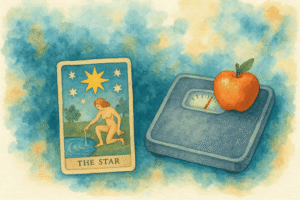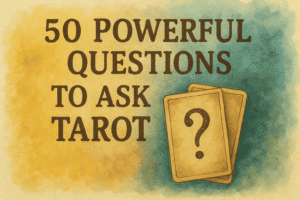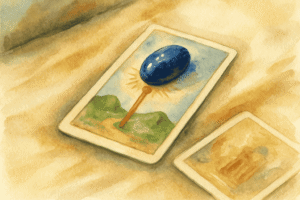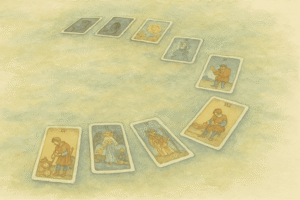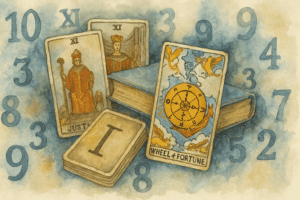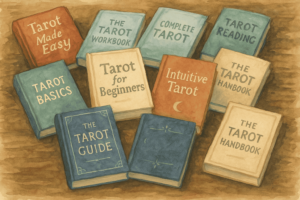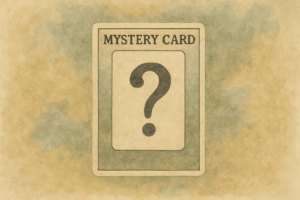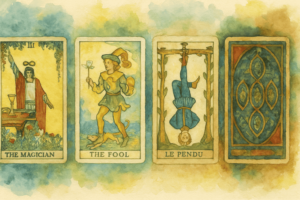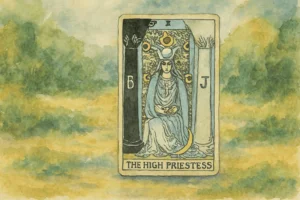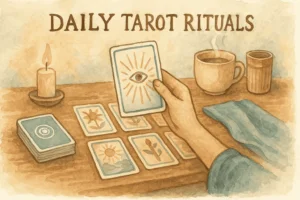Have you ever pulled a tarot card for yourself and felt that nagging twinge of anxiety creep in, distorting what should be a clear message? Reading tarot can be an empowering practice, yet our emotions often cloud interpretation, especially when stress, desire, or romantic fixation—notably limerence—affect our judgment. This can lead us to misread insights, ultimately steering us away from our true intuition. Learning to navigate this emotional landscape can be pivotal in using tarot as a meaningful tool for self-reflection and growth.
Understanding Bias in Your Readings
When engaging in tarot self-reading, it’s vital to recognize how anxiety, fear, and wishful thinking can twist our perception of the cards. For instance, someone in the grips of anxiety may see all cards as negative, focusing on the worst possible outcomes, while someone hopeful in love might misinterpret every sign as a romantic cue due to limerence.
Limerence specifically refers to an intense emotional obsession with someone, characterized by idealization and an overwhelming need for reciprocation. This emotional state can severely cloud judgment, leading to unreliable interpretations during love-related readings. The overwhelming nature of limerence might prompt you to read into every card as a sign of romance, even if the cards suggest otherwise.
Practical Tarot Self-Reading Tips
To read tarot for yourself without bias, consider implementing the following strategies:
- Journalføring: Before your reading, take a moment to write down your thoughts and emotions. This practice will help clear your mind and surface any anxieties or biases you may have.
- Neutral Questions: Frame your questions in a clear and neutral manner. Instead of asking, “Will he text me today?” consider rephrasing it to, “What should I know about my current relationships?” This approach allows for broader insights without leading the cards.
- Third-Person Perspective: Imagine you’re reading for a friend. This shift in mindset can help distance you from the emotional noise, enabling you to interpret the cards more objectively.
- Mindfulness and Meditation: Prior to your reading, engage in a brief meditation session to center yourself. Grounding techniques can also aid in disconnecting from emotional upheaval.
- Clearing Rituals: Perform rituals to cleanse your cards, such as smudging with sage, to ensure they reflect pure insights rather than your current emotional state.
Recognizing Emotional Projection
During readings, learning to identify emotional projections can transform your experience. If you notice yourself attributing your fears to the cards—like misinterpreting a quite positive card as dire—it’s time to pause. Recognizing these biases is the first step to reconnecting with your authentic intuition.
Trust your intuition, but remain mindful of emotional blind spots. If you find yourself interpreting everything through the lens of your current feelings, step back. Consider seeking confirmation from external sources, whether that means consulting a trusted friend or utilizing a Gratis online AI-tarotkort tool to cross-reference insights.
Benefits of Grounded Tarot Readings
By implementing these practices, you’ll not only cultivate a healthier relationship with tarot but also empower your personal growth journey. Avoiding bias during self-readings enhances clarity, promoting a stronger connection to your intuition. Ultimately, this leads to more accurate insights, less emotional confusion, and greater peace of mind.
Konklusion
Tarot readings can be transformative when approached with mindfulness and reflection. By recognizing and mitigating the influences of anxiety, fear, and limerence, you create a space for authentic insights and healing. Trust your journey, stay grounded in the present, and remember, tarot serves as a guide, not a dictate.
Referencer
- Psychology Today, An Overview of Limerence, 2021
- Smith, J., The Art of Tarot Reading, 2019
- Jones, A., Tarot and Self-Discovery, 2020







